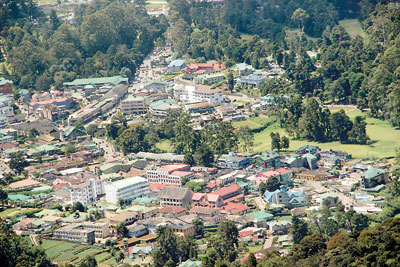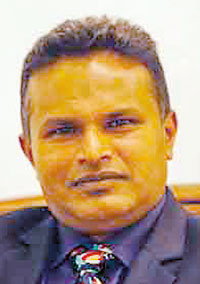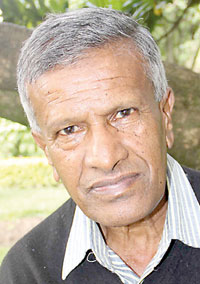News
Admin reforms planned in Nuwara Eliya
The dilapidated and disfigured central hill town Nuwara Eliya is heading for a small-scale administrative makeover at the local level.

New buildings do not fit into the landscape of the old colonial style architecture
Urban Development Authority deputy director for Nuwara Eliya, H M W Herath, said: “The city which is around 15 square kilometres is expected to be expanded to 50 sq km. More grama sevaka divisions would be annexed to the city, increasing from the present eight to 20. A meeting between representatives of state and private sector agencies in Nuwara Eliya will be held.’’
Unplanned buildings, including lodgings, hotels, restaurants, shops, bungalows and malls, have defaced the once-picturesque town and the number of buildings exceeds the town’s capacity.
Many business-people and hoteliers have bored tube wells in their compounds to tap ground water sources. Environmentalists believe this depletes the groundwater sources.
The drainage system is ancient. Leaks in some locations emit an unbearable stench.
New buildings do not fit into the landscape of the old colonial style architecture which had earned Nuwara Eliya the description of “Little England.’’
In the Gregory’s Park area a number of makeshift shanty-like boutiques have come up. Heritage sites like the Victoria Park are in neglect and people have encroached on park land.
With the growing number of tourists, traffic congestion has worsened. In addition there are no designated parking spaces in the town.
Chaminda Mahanayake, an environment researcher told the Sunday Times that conditions once seen in the dry zone are being experienced in Nuwara Eliya.
“Our research has shown the number of migrant bird species has fallen due to the climatic changes in Nuwara Eliya.’’

Chaminda Mahanayake
He also pointed out that usually the monsoon begins in April. However the rains now are not regular. “The tall bushy trees have disappeared from the town area. You could observe this most clearly on the way to the Horton Plains,’’ he said.
He added that irresponsible visitors are undermining the garbage disposal scheme of the local authority.
Pensioner, H M Wijepala, who was born in Nuwara Eliya laments the sad state of his home town.
“Streams have gone dry. The unplanned development has affected the rich biodiversity and created a drinking water problem in the town. There is unauthorised construction. Visitors are unaware of the rich biodiversity the town once possessed,’’ he complained.
“When we were young there were many spots for inland fishing along the banks of the Nanu Oya stream. Now the streams are polluted.’’
Meegoda Gamage Nimal, a businessman and a resident, said the city was fast changing.
“Today there is no beauty in this town as I remember it. Now, all you see are towering city malls. The cool climate, pure water and the natural beauty of the landscape is being destroyed,’’ he said.
“Where have the cypress trees gone? They are not seen even in areas surrounding Gregory’s Lake. The flowers by the lake are no more. Even the biodiversity is vanishing with no caterpillars, frogs, and crickets who made the nights come alive.

H M Wijepala
“The outdated drainage system has begun to pollute the drinking water. The unplanned digging of tube wells have created an imbalance in ground water levels. these problems have collectively created an imbalance in biodiversity. It is the town planners who are at fault,’’ he said.
Upali Abeyasinghe, a former deputy district secretary of Nuwara Eliya, said the city has changed. He said many people in Nuwara Eliya preferred agriculture over state sector employment. But, now, there is less land for agriculture because of the many buildings that have been built.
Mr. Abeyasinghe stressed that in any planning, the preservation of the biodiversity should be a priority. He praised the garbage management and disposal scheme launched recently.
| NUWARA ELIYA IN BRIEF | |
| Nuwara Eliya is mainly an agricultural area with historic ties to Sinhala kings, long before a British colonial governor arrived to find a location to chill out. Population: 740,000. Multi ethnic. Of these, 384,504 people live in estates, 293,921 live in rural areas, 40,575 are urban dwellers. Grama Niladhari divisions: 491 District secretarial divisions: 5 Divisional secretary divisions, Nuwara Eliya: 72 Pradeshiya Sabha: 5. Four new Pradeshiya Sabhas added – Norwood, Maskeliya, Agarapatana, and Kotagala from October. Sri Pada was handed to the Maskeliya PS from Ambagamuwa, triggering resident anger and political protests. Municipal councils: 2 District area: 1,741 square kilometres Mountains: Piduruthalagala the highest mountain in Sri Lanka; Kirigalpoththa, Thotupola Kanda, Kikiliyamana, Great Western, Haggala and Sri Pada. |

